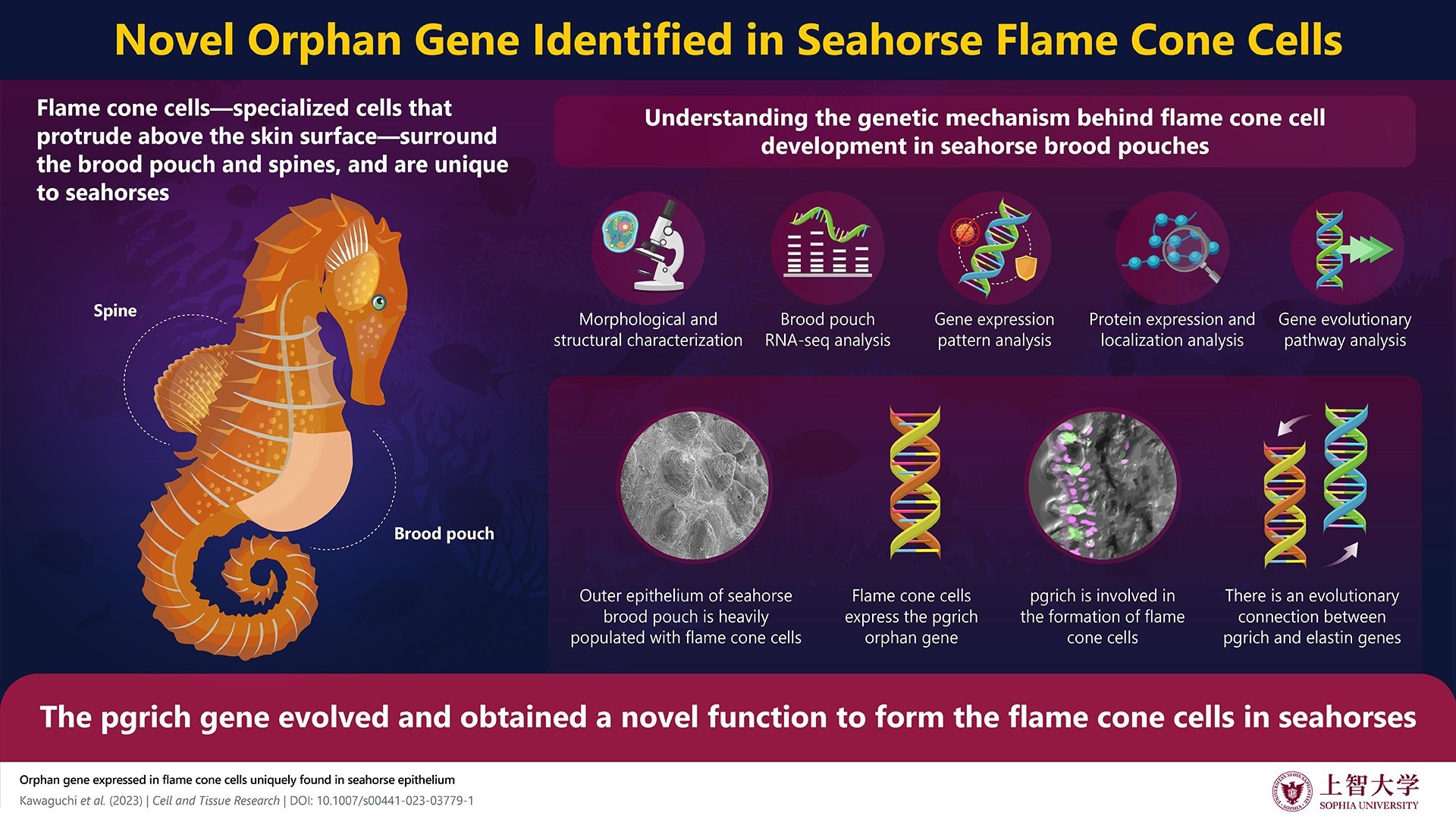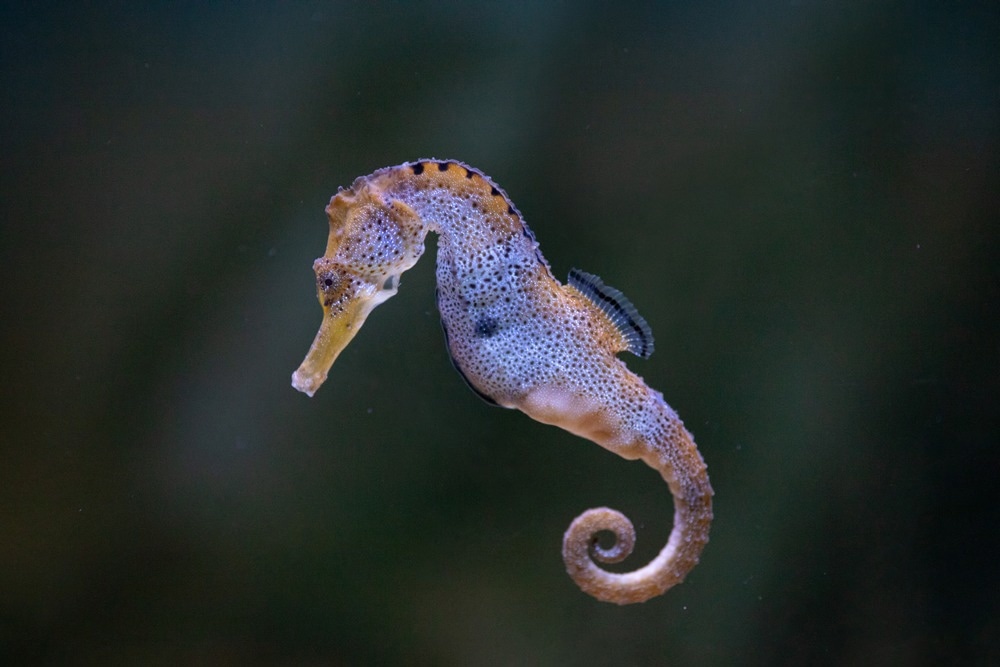Reviewed by Danielle Ellis, B.Sc.Jul 24 2023
A brood pouch in male fish and bony plates gives seahorses their distinctive shape. Additionally, these fish have flame cone cells, which are morphologically unique cells in the epithelium of the brood pouch and surrounding the spines. Nevertheless, these cells’ evolutionary background is uncertain.

Image Credit: Sophia University
Recently, scientists in Japan discovered a novel proline-glycine-rich gene (pgrich) in the flame cone cells that are connected to the growth and operation of the brood pouch.
The complex group of teleost fish includes seahorses, which have a distinctive morphology. Flame cone cells, a peculiar epithelial cell type coated by a mucous covering, are present in the seahorse’s distinctive spines and brood pouch.
However, these cells are not present in the Syngnathidae lineage’s close relatives, the barbed pipefish Urocampus nanus or the seaweed pipefish Syngnathus schlegeli. The purpose of flame cone cells has been theorized through studies, although it is still unknown how they evolved.

Image Credit: Azahara Perez/Shutterstock.com
Researchers from the Department of Materials and Life Sciences at Sophia University, under the direction of Associate Professor Mari Kawaguchi and Prof. Shigeki Yasumasu, have now discovered an ‘orphan’ gene in the seahorse Hippocampus abdominalis, which is a gene without clear homologous sequences in other species or lineages.
The proline-glycine rich (pgrich) gene is believed to have a role in the formation of the flame cone cells in the brood pouch. On May 25th, 2023, their research was published in the journal Cell and Tissue Research.
Seahorses have fascinating morphology, and males carry embryos in their brood pouch. The occurrence of male seahorses giving birth is a rare phenomenon in the animal kingdom and makes the seahorse a model organism to study evolution. We were keen to identify the genes responsible for forming the flame cone cells in the brood pouch.”
Mari Kawaguchi, Associate Professor, Faculty of Science and Technology, Sophia University
The researchers initially used histology and electron microscopy to determine that flame cone cells were present on the outer epithelium of the brood pouch in H. abdominalis but not in U. nanus or S. schlegeli.
Following that, in situ hybridization and immunohistochemical methods demonstrated that the pgrich gene was expressed and its protein was localized in body surface flame cone cells.
The translated amino acid sequence derived from the antisense strand, the non-coding portion, of the larger pipefish elastin gene exhibited some resemblance with the amino acid sequences of the protein product of the pgrich gene, PGrich. The scientists discovered many transposable elements close to the pgrich gene using sequencing studies.
They suggest that the elastin gene in pipefish might have evolved into the pgrich gene, which then acquired a novel function in the development of flame cone cells, which are specific to seahorses.
Kawaguchi concluded, “The evolutionary history of the pgrich gene may provide clues as to how the orphan gene came to be and how the brood pouch developed in this lineage. Seahorses are popular in home aquariums, and understanding these phenomena will contribute to people’s fascination with these fish!”
Source:
Journal reference:
Kawaguchi, M., et al. (2023). Orphan gene expressed in flame cone cells uniquely found in seahorse epithelium. Cell and Tissue Research. doi.org/10.1007/s00441-023-03779-1